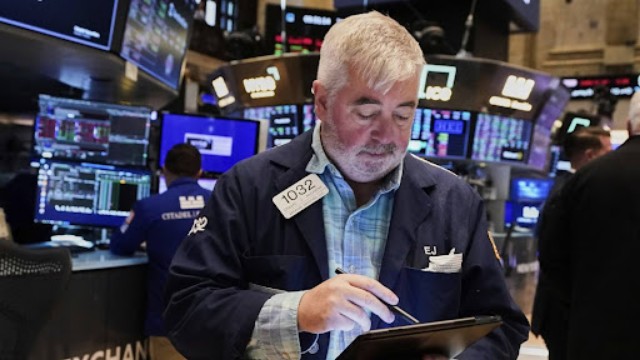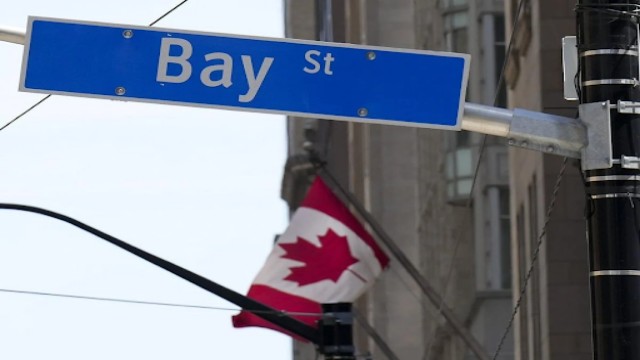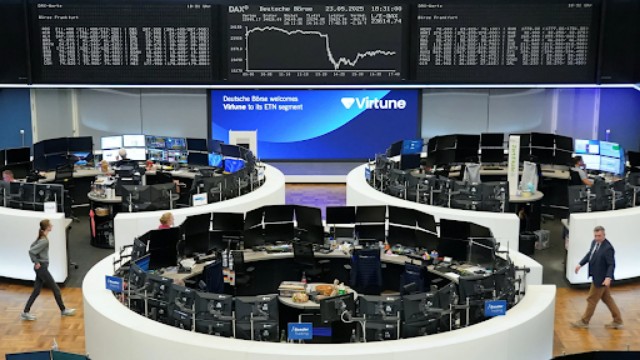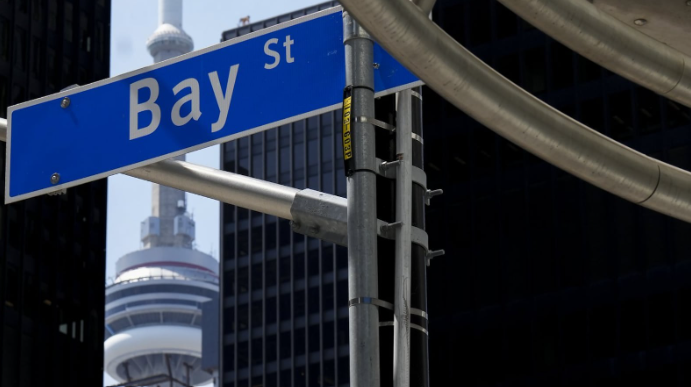
Anthony Matesic, a specialist, is seen working at the New York Stock Exchange on Tuesday, May 27, 2025. (Photo by Richard Drew/AP)
Canada’s main stock index saw a sharp rise on Tuesday, climbing nearly 200 points thanks to strength in utilities, financials, and tech shares. The S&P/TSX composite index closed the day up by 195.87 points, landing at 26,269.00.
This broad-based rally was fueled by gains across several sectors, according to Michael Currie, senior investment adviser at TD Wealth. However, the standout event of the day came from Scotiabank. The bank released its second-quarter earnings, which stirred investor attention despite a slight dip in profit.
Scotiabank posted a net income of $2.03 billion, a slight drop from $2.09 billion during the same quarter last year. Even though its credit loss provisions rose significantly—up $391 million to reach $1.4 billion—the bank surprised investors by increasing its dividend for the first time in two years. The payout jumped from $1.06 to $1.10 per share. This move helped push the bank’s stock price up by about 1.6 percent by the end of the day.
Currie called the earnings “a mixed bag,” but noted the dividend hike brought a welcome wave of positive sentiment to the market.
Adding fuel to the TSX rally was the strong performance of U.S. stock markets. After a pause on Monday for Memorial Day, Wall Street came back with energy. The Dow Jones surged 740.58 points to 42,343.65. The S&P 500 rose by 118.72 points to 5,921.54, and the Nasdaq jumped by 461.96 points to finish at 19,199.16.
Currie noted that market sentiment often lifts following long weekends, with investors feeling more upbeat. But the rally wasn’t just about good moods. News from U.S. President Donald Trump also played a role.
Trump announced a delay in imposing a hefty 50 percent tariff on European Union goods, pushing the implementation date from June 1 to July 9. He said the delay was to allow more time for talks after speaking with European Commission President Ursula von der Leyen, who signalled a willingness to negotiate seriously.
Currie added that while such delays suggest some progress, uncertainty still hangs in the air. Trump’s unpredictable statements continue to sway investor expectations, shifting between tough stances and sudden reversals.
Meanwhile, American consumers appear to be feeling a bit more confident. In May, U.S. consumer confidence rebounded after five months of decline. The Conference Board’s index jumped 12.3 points to 98—up from 85.7 in April, which had been the lowest reading since the early days of the pandemic. Currie noted this rise might catch some off guard, but it hints at growing optimism.
In other market news, the Canadian dollar slipped slightly to 72.60 cents U.S., down from 72.83 cents U.S. the day before. Crude oil prices dipped 64 cents to US$60.89 per barrel. Natural gas edged up two cents to US$3.74. Gold fell sharply by US$65.40 to US$3,300.40 an ounce, and copper dropped 10 cents to US$4.74 a pound.















